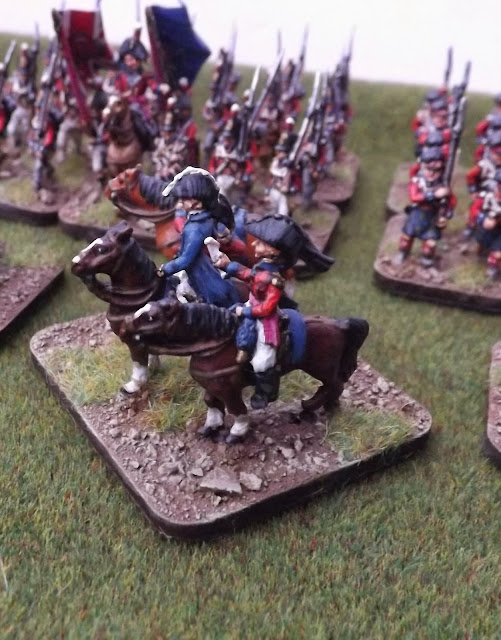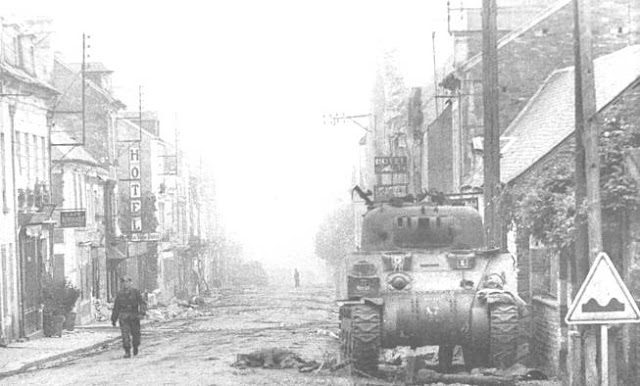So what are the claims for this book, proclaimed on the back of the dust cover?
- Compelling study of the opening campaign of the Peninsular War
- Reassessment of two great Peninsular Generals
- Vivid reconstructions of the battles of Rolica and Vimeiro
- Insight into Napoleonic warfare from eyewitness accounts
- Covers the guerrilla war against the French
- Reconsiders the impact of the campaign on the outcome of the Peninsular War
The book consists of nine chapters, preceded by a chronology of events starting in 1750 with the birth of Sir Hew Dalrymple though to the death of the Duke of Wellington in 1852.
There are eight well laid out and clear maps that help illustrate where particular events were occurring together with the battles of Rolica and Vimeiro. In the centre of the book are the illustrations and modern day pictures of some of the main characters involved, the places and events as portrayed at the time or soon after, and specific places mentioned in the text with recent photos of how they look today.
The last chapter, covering "Touring in the Peninsula", contains some handy information about finding your way around some of the main sites in Portugal and what to particularly look out for. I found myself wishing I had had this book with me when I walked around Obidos, Rolica and Vimeiro in the early 90's.
For those of you who want to know on what references the author is relying on when marshalling his facts, there is an extensive list of references listed by chapter with a corresponding number printed in the body of each chapter. I like this and found it straight forward to flick between it and the text to see where a particularly interesting "nugget" was taken from.
Lastly there is an extensive list of primary and secondary sources listed in the "Bibliography" section, followed by a very useful index, all making the book a useful launch pad for further reading.
When I first saw the title of the book, my first reaction was Wellington wasn't involved in the first invasion of Portugal as Sir Arthur Wellesley didn't assume the ducal title until after his victory at Talavera in 1809, and I smiled when Buttery deals with that point in his preface, pointing out that the choice of title is in keeping with the plan to write a series of books on Wellington's campaigns and that he is not the only author to choose this option; Jac Weller's "Wellington in India" for example.
The layout of the book is logical and easy to follow, starting with a description of the events that lead up to 1807 and Napoleon's rise to power in Europe. The text sets up the issues that would lead to the confrontation with the Portuguese, namely enforcement of the Continental System against Britain. The pressure on the Portuguese to satisfy the demands of France, the most powerful nation on land, matched by the demands of their oldest ally Britain, the most powerful nation at sea, upon which Portuguese trade, significantly with Britain and connections with her colony Brazil relied, are covered in detail. The balancing act of being a neutral small country is described as she desperately tried to manage the expectations of both. In the end Napoleon forced the issue by demanding Portuguese authorities confiscate British traders goods and monies as part of their compliance, something that would have greatly damaged Portuguese trade and forced a war with Britain. As is now known, the struggle to placate Napoleon was in vain, as the Emperor had already decided to annexe both Portugal and Spain and plans were in motion to effect that decision.
The story then moves on to consider the leader of French forces selected to spearhead the invasion, General Jean-Andoche Junot. The career of Junot is laid out from his birth in 1771 on the feast day of St Andoche to his meeting with Napoleon at the Siege of Toulon and his subsequent rise through the ranks serving in all three arms, but finding his talents best suited in the cavalry. He was a fighting soldier, fearless in a fight, and totally loyal to his friend and Emperor. It would also be true to say that he was not the brightest of Napoleon's leaders, but his limitations may have been part of the reason for him being chosen for such an independent command, as someone very unlikely to threaten Napoleon's authority and leadership with any political ambitions of his own.
The next chapter covers the march on Lisbon and the events leading up to the occupation of the city.
This made fascinating reading as Buttery describes the harrowing march through Spain with the starving bedraggled survivors staggering into Lisbon. The reputation of the all conquering armies of France cowed the Portuguese capital into submission, even though the men that arrived before their city were in such a poor state and in desperate need of rest and supplies. For the success of this expedition Junot received the title Duc d'Abrantes, although it seems he was disappointed not to get his Marshals baton.
Even at this early stage of the war in the Peninsula the barbaric excesses of the French army when un-supplied and finding forage hard to come by are observed with even their supposed allies, the Spanish, having civilians raped and murdered along the route in their desperate attempt to gain relief from their sufferings.
With the arrival in Portugal the story moves on covering the occupation and subjugation of the wider country with the rise of Portuguese resistance. With this resistance came reprisals and the murderous excesses by both sides are covered. However given the power of French arms at this stage, the brutality of the French against the Portuguese civilians is well documented and with these excesses came the universal hostility threatening the French ability to hold what they had.
 |
| General Loison |
The resistance growing in Portugal and Spain to French occupation began to arouse a response in Britain and the political and public discussions to react to the situation are then covered. The narrative develops the reasons why the British expeditionary force ended up with three commanders, the strengths and weaknesses of the force and the success in choosing one commander who would, in time, stand out above all others as the greatest British General since the Duke of Marlborough.
The landings of the British and the co-operation with Spanish and Portuguese forces bring the book towards its climax as the French forces start to feel the pressure of trying to maintain control of a country growing in hostility to their presence, whilst having to react to the threat of an organised disciplined army arriving in their midst with overwhelming naval support. This, added to insecure supply lines through Spain, and demands from Napoleon to support the forces in Spain. No wonder Junot's reaction to the British landing seems somewhat uncoordinated with his dispatch of General Delaborde to hold up the British at Rolica whilst French forces were massed. The problem of losing control of Lisbon whilst his forces headed north to deal with the British seemed to paralyse Junot's response, and only added to his haste when he eventually chose to act and arrived before Wellesley's army at Vimiero. The brutality of French arms against the Portuguese had one final payback to make, for although the French enjoyed a cavalry superiority, the British enjoyed better intelligence due to the help they received on French numbers and movements. It was Junot who ended up attacking a superior force that he believed to be weaker in numbers.
The book concludes with events following the French defeat at Vimiero and the subsequent evacuation of French forces, together with their loot and arms back to France in British shipping. The Convention of Sintra is covered together with the response in Portugal, Britain and France. The British commanders involved, Dalrymple, Burrard and Wellesley and their actions are discussed together with the enquiry set up to investigate where the responsibility lay and what the various parties had to say about it. In France the reaction by Napoleon to Junot's exit from Portugal was more positive, given the recovery of his troops and arms from what had been a failure. The reaction by the British also helped take the pressure off Junot.
I really enjoyed this book. As the author points out in his preface, there is a distinct lack of recent books covering this early period of the Peninsular War and the problems that were to beset French forces throughout the war are in evidence even at this early stage. Namely French excesses against the civilian population, leading to reprisals and guerrilla warfare, and Napoleon's inability to grasp the issues facing his commanders in this theatre. Starting with his selecting an inadequate force to occupy and subjugate Portugal, his lack of planning to supply that force and then his demands placed on that force to support others operating in Spain. I learnt a lot about the occupation and fighting in Portugal before British involvement and the political events leading up to the invasion.
My only criticism of the text, and its a small one, is in its covering of the battles of Rolica and Vimiero. The description of events were familiar to me from other sources and I don't think there was much new to me in them. However I did feel that other texts have given more information about the forces and their movements. As a war-gamer, I want to know about how the armies set up and fought, and I kept thinking that I was glad to have read Jac Weller's version of events based mainly on Oman to give me a mental picture of how the armies set up and fought on the day. That said, the book having gone into detail about the strategic issues facing Junot at this time, did give me a much better understanding as to why his command abilities at Vimiero seemed so poor on the day.
If you are at all interested in the Peninsular War and particularly the early stages of it then this book is a great read and well worth getting a copy of.



.jpg)



















































